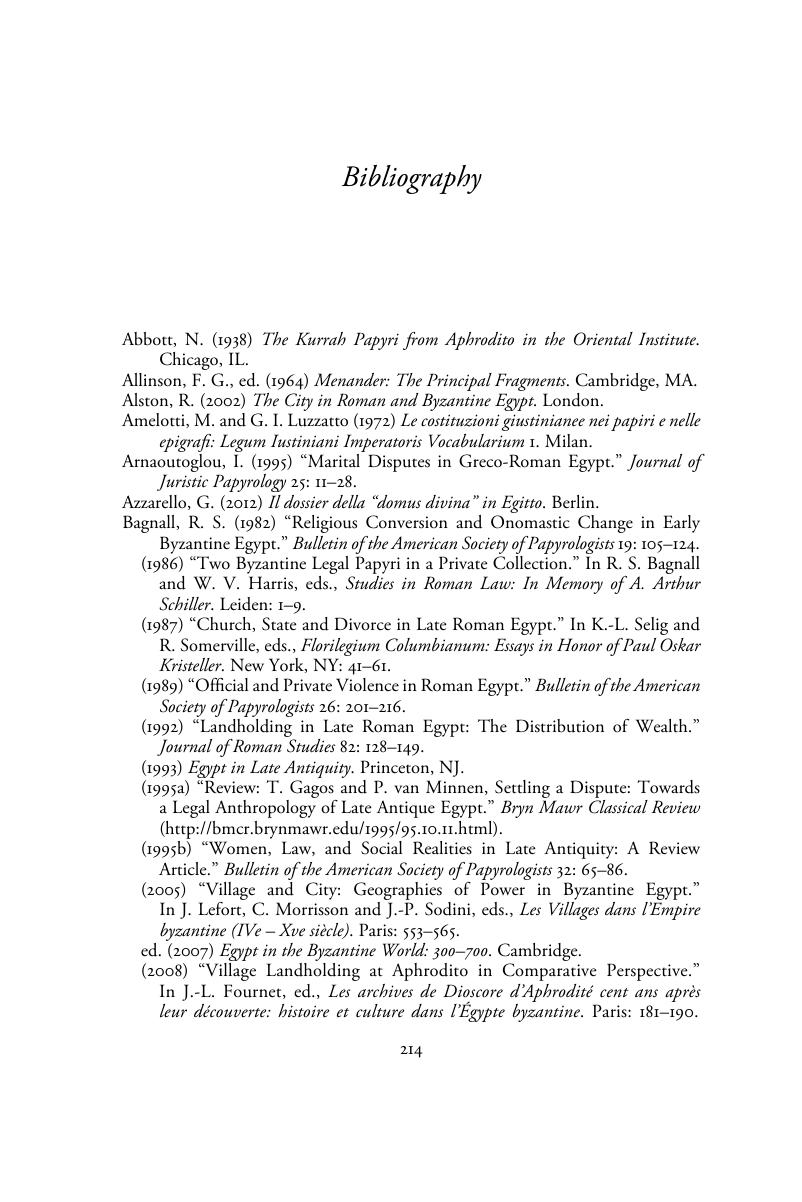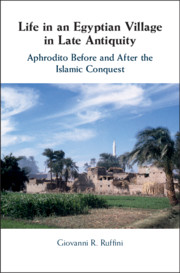Book contents
- Life in an Egyptian Village in Late Antiquity
- Life in an Egyptian Village in Late Antiquity
- Copyright page
- Contents
- Figures
- Map
- Cast of Characters
- Map
- Chapter 1 Aphrodito in Egypt
- Chapter 2 A World of Violence
- Chapter 3 A World of Law
- Chapter 4 Dioskoros, Caught in Between
- Chapter 5 Working in the Fields
- Chapter 6 Town Crafts and Trades
- Chapter 7 Looking to Heaven
- Chapter 8 From Cradle to Grave
- Chapter 9 Aphrodito’s Women
- Chapter 10 Big Men and Strangers
- Chapter 11 Life in the Big City
- Chapter 12 Conclusion
- Bibliography
- General Index
- Index Locorum
- References
Bibliography
Published online by Cambridge University Press: 28 September 2018
- Life in an Egyptian Village in Late Antiquity
- Life in an Egyptian Village in Late Antiquity
- Copyright page
- Contents
- Figures
- Map
- Cast of Characters
- Map
- Chapter 1 Aphrodito in Egypt
- Chapter 2 A World of Violence
- Chapter 3 A World of Law
- Chapter 4 Dioskoros, Caught in Between
- Chapter 5 Working in the Fields
- Chapter 6 Town Crafts and Trades
- Chapter 7 Looking to Heaven
- Chapter 8 From Cradle to Grave
- Chapter 9 Aphrodito’s Women
- Chapter 10 Big Men and Strangers
- Chapter 11 Life in the Big City
- Chapter 12 Conclusion
- Bibliography
- General Index
- Index Locorum
- References
Summary

- Type
- Chapter
- Information
- Life in an Egyptian Village in Late AntiquityAphrodito Before and After the Islamic Conquest, pp. 214 - 226Publisher: Cambridge University PressPrint publication year: 2018



